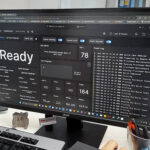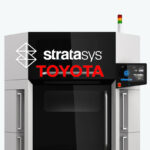ASIA ELECTRONICS INDUSTRYYOUR WINDOW TO SMART MANUFACTURING
Desktop Metal Scales up 3D Printing With New P-1 Model
Desktop Metal has launched a Reactive Safety Kit for the Production System P-1. Thus, unlocking safe, high-speed binder jet 3D printing of titanium and aluminum.
For two years now, the company has been developing and testing the P-1 Reactive Safety Kit, which features ATEX-rated components. Moreover, it also has critical hardware and software updates to ensure the highest level of safety.
An equipment can earn ATEX certification only if it has undergone rigorous testing outlined by European Union directives. Furthermore, if it conforms to safety standards in specific environments with explosive atmospheres.

“Titanium and aluminum are two of the most frequently requested materials at Desktop Metal. We are proud to say that we can now offer a commercial 3D printer with the necessary safety features to binder jet 3D print these materials,” said Ric Fulop, Founder and CEO of Desktop Metal. “Based on our ongoing projects with major manufacturers, we know our technology is well on its way to unlocking new designs that deliver higher performance, weight reductions, and other benefits. All with our high-speed 3D printing technology that makes Additive Manufacturing more affordable for production volumes. We are diligently following our roadmap to deliver high-volume production of these materials on our largest printers in the future.”
Simplifies, Lowers Cost of Titanium Production
A number of Desktop Metal customers are already binder jetting titanium and aluminum today. In fact, Robert Swenson, owner of TriTech vouched the crucial role of binder jet 3D printing. This simplifies and lowers cost of titanium production even with the most complex geometries.

Additionally, Desktop Metal has several significant projects in development with major manufacturers. Particularly, using a variety of specialty materials developed by Kymera International, including titanium and aluminum. “Since formalizing our partnership in 2021 through a Joint Development Agreement, we have been excited to work closely with Desktop Metal to develop a range of metal powder solutions optimized for the binder jetting process,” said Joe Croteau, Technology Manager – Specialty Materials with Kymera.
Kymera International has contributed decades of metallurgical expertise and process knowledge to offer sintered aluminum alloys with excellent performance. “Kymera’s well-established relationships with a diverse group of customers has given us the opportunity to focus on the needs of high-volume manufacturers, and we are proud to now have a commercially established solution. Over the past two years, we’ve successfully printed a variety of aluminum geometries and part sizes through multiple programs.”
The Desktop Metal Production System P-1, as well as an array of titanium and aluminum designs, will be on display June 25-27 at RAPID + TCT at the Los Angeles Convention Center.
Binder Jetting Offers Wide Range of Benefits
Binder Jetting has high regard for its fastest method of metal 3D printing for high-volume output. Specifically, it uses a digital file to quickly inkjet a binder into a bed of powder particles such as metal, sand, or ceramic to create a solid part, one thin layer at a time. When printing metals, the final bound metal part needs to undergo sintering in a furnace to fuse the particles together into a solid object.
Thus, binder jet 3D printing, compared to traditional and other forms of 3D printing, enables manufacturers to produce complex parts. That is, with unique benefits, such as size and weight reductions, part consolidation, and performance improvements.
Because of the broad material flexibility of binder jet 3D printing, Desktop Metal employs a tiered qualification system for production of powdered materials:
- Qualified Materials come with complete printing and sintering profiles with fully characterized material and mechanical properties
- Customer-Qualified Materials have printing and sintering profiles developed by or in partnership with customers and/or partners with material and mechanical properties suitable for specific applications
- R&D Qualified Materials have demonstrated binder and process compatibility with our printers, with final printing and sintering profiles under development by DM or our customers
9 May 2024




